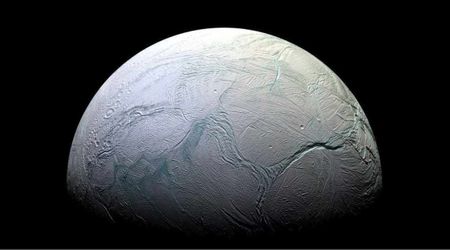How much does a spacesuit cost?

When you think of space travel and astronauts, you likely envision them in cumbersome spacesuits with large, globular helmets. Spacesuits, however, are more than just a uniform – they are complex, human-sized spacecraft capable of sustaining life and providing protection in the harsh conditions of space.
Spacesuits are constructed to protect the astronaut from a wide range of threats, such as the vacuum of space, radiation from celestial bodies, and particles travelling up to 18,000 miles an hour. They also provide oxygen, communications, and a wide range of diagnostic equipment to astronauts on spacewalks and while traversing celestial landscapes.
Spacesuits production
A total of 18 suits were developed in the United States for the 1974 Space Shuttle programme. Originally costing between an estimated $15 and $22 million each, these suits were intended to have a 15-year lifespan. However, some of these suits are still in use today. Over the years this number has shrunk due to the loss of suits during testing or on spaceflight disasters, resulting in a limited number of mission-ready suits.
Although 11 suits remain, 7 require refurbishment – meaning there are now only 4 mission-ready spacesuits available. This lack of available suits resulted in NASA’s first all-female spacewalk in 2019 on the International Space Station being postponed; as the space station only had one medium-sized suit, NASA had to send up a medium-torso shell to fit into one of the existing larger suits before the spacewalk could be accomplished.
If the current spacesuits are almost 50 years old and the supply of mission-ready suits is running low, why hasn’t NASA developed new ones?

In 1974, NASA's spacesuits cost between $15 and $22 million. Today, that would amount to about $150 million.
The need for more spacesuit
NASA has invested more than $250 million in spacesuit development since 2009 with the aim of creating a new range of suits for the 2024 Artemis program and, as of 2021, plan to spend at least $600 million more. However, they still do not have new mission-ready spacesuits available for use. As the start date of the first Artemis mission approaches, there is a new sense of urgency attached to the production of mission-ready spacesuits.
This urgency, however, is not only due to time constraints and the limited number of existing suits still available; the individual components used to keep the current suits healthy and functional are also dwindling in number, limiting the work that can be done on the International Space Station. An example of this is carbon dioxide sensors – the design used by the current suits is no longer in manufacture and many of the production companies involved in the original suits are no longer operational. As NASA has had to create their new suits from scratch, it’s no surprise that development and production have cost a quarter of a billion dollars.
Although spacesuits, due to their high specifications and requirements, are high-priced equipment in their own right, the most expensive parts of a spacesuit are subject to debate. Some commentators argue that the many layers of hi-tech, custom-made materials that help to keep astronauts safe while allowing for a high level of mobility are one of the most expensive aspects of the spacesuit. The spacesuit itself, however, would not work without a functioning life support system. Worn on the back of a suit, this system regulates a whole host of functions such as pressure and temperature. As the life support system is a multi-functioning and vital part of a spacesuit, the components are costly pieces of cutting-edge technology before they are even installed in this complex piece of equipment.
The next generation of spacesuits
In 2019 NASA introduced their new generation of spacesuits – the Xemu. These suits, however, are still prototypes undergoing rigorous testing and are not yet mission-ready. To be mission-ready these spacesuits not only need to keep astronauts safe but also need to allow for successful movement in a lunar landscape. They have also been designed in the hopes of functioning fully on the surface of Mars. This means that the spacesuits are required to work successfully in a wide range of temperatures and environments.
For example, NASA’s Curiosity, one of the few active rovers on Mars, has measured temperatures as low as -125 degrees Celsius (-195 degrees Fahrenheit) and as high as 20 degrees Celsius (70 degrees Fahrenheit) on the surface of Mars. The Moon, on the other hand, has a much wider temperature range; when sunlight hits the moon’s surface the temperature can reach 127 degrees Celsius (260 degrees Fahrenheit), while it can dip to -173 degrees Celsius (-280 degrees Fahrenheit) when the sun goes down. The varying topography of the two celestial bodies also offers challenges to spacesuit design, ranging from deep craters on the Moon to volcanoes and dust storms on the surface of Mars.
The new generation of space suits aims to be more flexible than their predecessors, allowing for greater mobility on future missions to the Moon and while in transit to lunar orbit. The current group of spacesuits only allow a limited range of mobility. When used for extravehicular activities on the Moon they restricted movement to the point where Neil Armstrong and Buzz Aldrin could only jump to traverse the surface.
The new glove design – required for manual dexterity on both spacewalks and on the lunar surface and packed with heat radiators to keep astronauts warm in the -270 degrees Celsius (-454 degrees Fahrenheit) temperatures of outer space – allows astronauts to freely move their fingers individually. A greater range of mobility has also been incorporated into the legs and arms of the suit to ensure astronauts have access to a wider range of movement – such as walking or climbing.
The spacesuits have also been created to be more adaptable to different body shapes and sizes – meaning that, hopefully, future spacewalks will no longer be cancelled due to the limited suit sizes available.

NASA has already spent $420 million developing the new Xemu spacesuit, and anticipate spending $625 million more...
Why are spacesuits so expensive?
The answer to this question is not a simple one. There are a variety of reasons why spacesuits can be expensive, and each suit varies in price depending on its features and capabilities.
They need to be very durable in order to protect the astronauts from the harsh environment of space. Some of the most important factors that affect the cost of a spacesuit include the materials used in construction, the complexity of the suit's design, and the number of tests and simulations it undergoes before being deemed flight-worthy.
Despite the high price tag, spacesuits are essential for protecting astronauts during space missions. Without them, we would not be able to explore space or conduct other important research projects.
Artemis III spacesuit: the AxEMU pricetag
The Artemis III mission, scheduled to land near the lunar south pole in 2025, will see astronauts return to the Moon for the first time in over 50 years. A major component of this mission is the next-generation spacesuit, known as the Axiom Extravehicular Mobility Unit (AxEMU), designed by Axiom Space.
The AxEMU spacesuit, currently in the prototype stage, was unveiled at the Space Center Houston’s Moon 2 Mars Festival, which you can see a picture of below.
I was not able to find any information on the production cost of a single AxEMU suit, however, we know that Axiom Space was awarded 228 million dollars for the entire development project for this new type of suit.
As we stand on the brink of a new lunar age, the AxEMU serves as a critical tool enabling astronauts to traverse more of the lunar surface than ever before and paving the way for a sustainable human presence there.

Conclusion
The materials are not the only costly aspect of developing new suits. NASA currently has over 2,000 employees working on the Artemis mission, as well as many contractors and consultants. The army of researchers and engineers needed to develop such a complex design will cost a significant amount of money, as well their equipment and creating the testing conditions that replicate the environment that astronauts will experience on missions.
All these aspects of spacesuit development are not only expensive but also incredibly time-consuming. A report by the American Government’s Inspector General, released in August 2021, estimates that the development of the new generation of spacesuits is behind schedule by over 2 years, greatly jeopardising NASA’s goal of a crewed mission to the Moon by 2024. This delay, primarily caused by funding shortfalls and closures during COVID-19, has also impacted the development of NASA’s human lunar lander and Space Launch System programs, both necessary for the 2024 lunar landing.
Although a delay to Artemis’ first crewed mission to the Moon is possible, NASA’s Head Administrator Bill Nelson remains positive about future missions; “we’re in the home stretch of preparations” he said, stating that the Artemis missions pave the way “to explore the Moon, Mars, and beyond for many years to come”.









